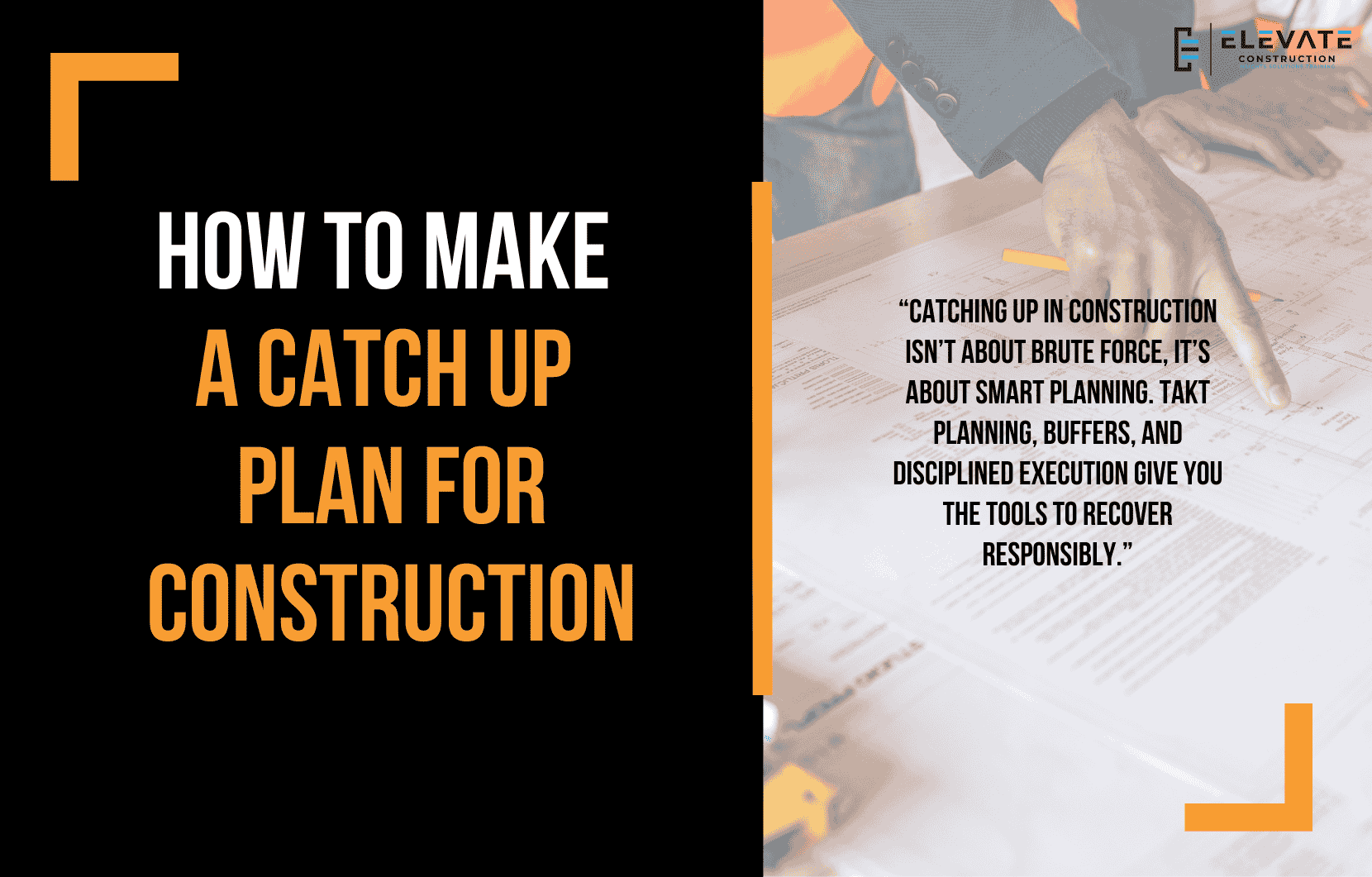How to Make a Catch-Up Plan in Construction
Falling behind on a project happens to everyone. The question is: how do you recover responsibly? In this blog, I’ll share some do’s and don’ts, why traditional CPM schedules make recovery nearly impossible, and how Takt planning gives you built-in flexibility to stay on track.
The Problem with CPM Recovery Plans:
Let’s be honest, recovery inside a CPM framework is like trying to dry the ocean with a mop. Here’s why:
- Trade stacking & trade burdening happen naturally.
- CPM schedules are too complex for field teams to use.
- Recovery becomes endless: baseline → delay → recovery plan → repeat.
The result? Stress, wasted effort, and frustration.
Why Takt Planning Works Better:
A Takt plan gives you a macro-level, single-page production strategy that’s actually usable in the field. Instead of wishful thinking, Takt builds recovery options directly into the system.
Here’s what makes it powerful:
- Slowest responsible speed drives your plan.
- Zones flow in sequence, creating a cascade.
- Built-in buffers give you space between target and committed dates.
This way, recovery isn’t reactive, it’s already accounted for.
The Best Recovery Plan: Use Buffers
When delays happen, first ask:
- Can we swarm it?
- Can we use workable backlog or swing capacity?
- Can we adjust responsibly without adding labor, stacking trades, working overtime, or rushing?
If not, simply eat into one buffer day. That’s the safest, most reliable path to recovery.
What If You Don’t Have Buffers?
If your project wasn’t set up with buffers, don’t panic, you still have options:
- Adjust zoning – Smaller zones = faster overall phase.
- Remove trade bottlenecks – Support the slowest trade so successors can move faster.
- Eliminate zone bottlenecks – Redesign or simplify tough areas.
- Use work packaging – Prefab, redesign, or rethink installation to ease constraints.
- Double down on planning – Lean harder into pull planning, lookaheads, weekly work plans, material procurement, and full kits.
Often, the real recovery comes not from dramatic changes but from intensifying discipline in planning and preparation.
Key Advice:
- Always see the path to finish.
- Understand your options through production science.
- Make calm, intelligent decisions.
- Keep the jobsite stable, clean, and organized.
Rushing, adding labor last minute, overloading crews, or panicking only make things worse. Production-minded recovery is the way forward.
Final Thoughts:
Catching up in construction isn’t about brute force, it’s about smart planning. Takt planning, buffers, and disciplined execution give you the tools to recover responsibly.
If you want to learn more we have:
-Takt Virtual Training: (Click here)
-Check out our Youtube channel for more info: (Click here)
-Listen to the Elevate Construction podcast: (Click here)
-Check out our training programs and certifications: (Click here)
-The Takt Book: (Click here)
Discover Jason’s Expertise:
Meet Jason Schroeder, the driving force behind Elevate Construction IST. As the company’s owner and principal consultant, he’s dedicated to taking construction to new heights. With a wealth of industry experience, he’s crafted the Field Engineer Boot Camp and Superintendent Boot Camp – intensive training programs engineered to cultivate top-tier leaders capable of steering their teams towards success. Jason’s vision? To expand his training initiatives across the nation, empowering construction firms to soar to unprecedented levels of excellence.
On we go

